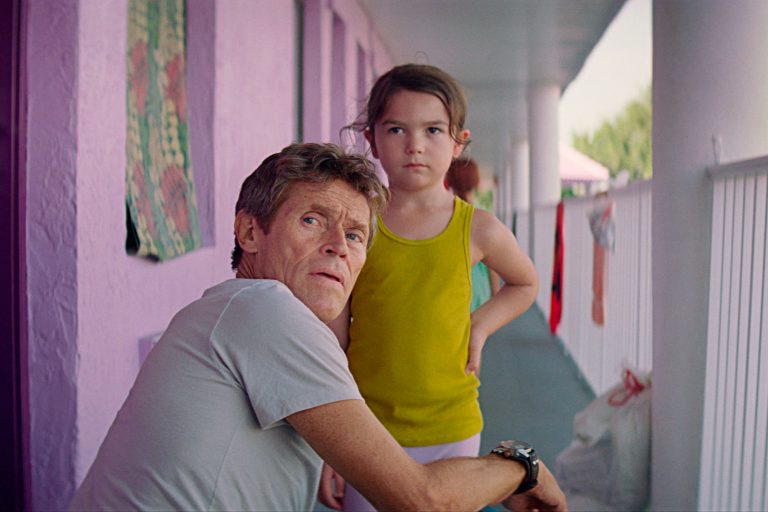Karla Badillo’s “Oca” (2025) follows four interwoven tales that speak about the nature of faith and devotion. Set in central Mexico, this meditative film patiently observes the lives of its characters from different walks of life.
Yet, despite their differences, they are all heading to the same destination, hoping to find something elusive or incomprehensible at the said mystical place. Through their stories, the film explores the intersectional layers of privilege, examining them through the lens of class, gender, and other factors. It utilizes the distinct perspectives of these characters to highlight how the belief systems interject through their effects on different individuals.
Before diving into those specifics, “Oca” introduces its central protagonist, Rafaela (Natalia Solián), a young nun haunted by visions that she can’t lucidly explain to a living soul. Still, she considers them as part of her devotion to God. She is so profoundly invested in her faith that she deems everything as God intended it to be.
That is the crux of her arc in Badillo’s script, which navigates her journey to meet a recently appointed archbishop in a distant town. She is part of a lesser-known congregation located farther from civilization, joined by only two nuns. They lead her on that journey, deeming it part of her destiny, but leave her with the burden of bringing hope for their survival.
Along the way, she crosses paths with a group of pilgrims walking the road carrying a sculpture of their saint on their shoulders. They are all so devoted to this cause that it makes them overlook their flaws. It affects a young girl who volunteers to be a part of this journey out of desperation to connect with someone, since she is either shunned or ignored by the elders. They judge her for things that are beyond her control or comprehension, and nearly hold her responsible for something she can’t have a say in. Their journey offers light to the staunch fundamentalism that stems from misguided, misogynistic notions.
Beyond the central figures, the script brings in Gabriel (Leonardo Ortizgris), a paratrooper who is drawn—almost against his will—into one of the missions, and Palmira (Cecilia Suárez), a wealthy woman whose privilege exempts her from the harsh sacrifices others must endure to reach the same destination.
Gabriel’s simmering resentment embodies one shade of reluctant conformity, while Palmira—and even her chauffeur, Manuel (Gerardo Trejoluna)—illuminate entirely different faces of submission and compromise. Badillo’s script is more nuanced in its analysis of the latter as she dissects Palmira’s bond with Manuel through the intersection of class and gender — even if they appear within the confines of a luxurious car.

Suárez’s subdued performance conveys Palmira’s burning anguish piece by piece, letting her gaze tell us about it than any words can. She finds those in-between details to offer a portrait of a woman beyond the one we are introduced to. Her cleverly calculated act ties in with the film’s gender analysis and how faith affects women, whether they have denounced the material world for a priesthood or are too young to grasp the complexities of those biases.
Through that lens, the script presents Rafaela’s inward journey, whose path branches as she faces others in her pursuit of her destiny. Solián’s muted performance reveals the crushing burden of the nun’s unwavering devotion, further amplified by everything she encounters along the way.
Despite these sparks of brilliance, “Oca” can’t quite translate its noble intentions into something memorable. It struggles to strike a balance between its subplots that serve different goals in the film. On one hand, the script reveals more about Palmira and Rafaela’s inward journey, offering more than meets the eye, which makes it an evocative and occasionally transcendental experience. Yet, on the other hand, the film doesn’t flesh out Gabriel’s or the pilgrims’ tales in the same vein, which leaves them merely as representational figures. Even when it portrays the young girl’s despair, it doesn’t dive deep enough into her psyche.
That doesn’t mean that there’s nothing to admire in this film, which gradually reveals what binds or divides its characters. Through the intertwined stories of the young girl, the nun, and the wealthy woman, the film reveals how the shadows cast by the men in their lives continue to haunt them long after the moments themselves have passed. It also reveals how devotion makes people willing to make sacrifices without questioning how it would all amount to in the end. Badillo connects all these pieces to highlight their spiritual transformations, whether due to the crisis of faith or an awakening. Yet, her film can’t quite reach its complete potential through the sum of all its pieces.




![A Ghost Story [2017]: Sundance Film Festival Review](https://79468c92.delivery.rocketcdn.me/wp-content/uploads/2017/01/a-ghost-story-768x578.jpg)



